You searched for: 代谷歌竞价开户投放包上【TG飞机:@bapingseo】快手引粉项目【TG电报:@bapingseo】信息流竞价广告投放【Telegram:@bapingseo】ag真人官网爱博盘口官方网址?G1xMp3/152630.html
<< Previous | Displaying results 201-225 of 393 for "代谷歌竞价开户投放包上【TG飞机:@bapingseo】快手引粉项目【TG电报:@bapingseo】信息流竞价广告投放【Telegram:@bapingseo】ag真人官网爱博盘口官方网址?G1xMp3/152630.html" | Next >>
-
Emanuel Ringelblum and the Creation of the Oneg Shabbat Archive
ArticleEmanuel Ringelblum was a Warsaw-based historian and social welfare worker before WWII. Learn about the secret archive he would establish in the Warsaw ghetto.

-
Mohamed Helmy
ArticleDr. Mohamed Helmy and Frieda Szturmann helped save a Jewish family in the heart of Nazi Germany. Helmy was the first Arab recognized as Righteous Among the Nations.

-
Lebensraum
ArticleThe concept of Lebensraum, “living space,” was as a critical component in the Nazi worldview that drove both its military conquests and racial policy.
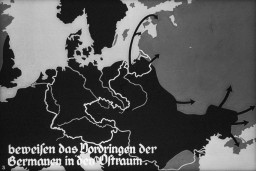
-
Helena Husserlova with her daughter, Zdenka
PhotoIn this portrait, Helena Husserlova, wearing a Jewish badge, poses with her daughter Zdenka who is holding a teddy bear. The photograph was taken shortly before they were deported to Theresienstadt. Zdenka was born in Prague on February 6, 1939. On October 10, 1941, when Zdenka was just two and a half years old, her father was deported to the Lodz ghetto. He died there almost a year later, on September 23, 1942. Following his deportation, Helena and Zdenka returned to Helena's hometown to live with…
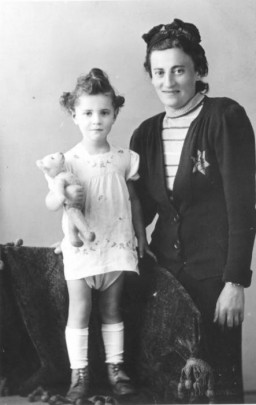
-
German Troops Occupy Hungary
Timeline EventMarch 19, 1944. On this date, Germany occupied Hungary and installed General Dome Sztojay as prime minister.
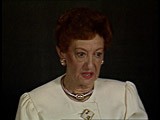
-
Stahlecker Report
Timeline EventOctober 15, 1941. On this date, Walter Stahlecker submitted a report on the killing of Jewish civilians in the northwestern Soviet Union.

-
The Nazi Rise to Power
ArticleThe Nazi Party was one of a number of right-wing extremist political groups that emerged in Germany following World War I. Learn about the Nazi rise to power.
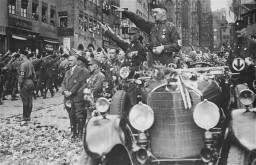
-
Gerda Blachmann Wilchfort describes the mood of passengers on the "St. Louis" after they were denied entry into Cuba
Oral HistoryGerda and her parents obtained visas to sail to Cuba on the "St. Louis" in May 1939. When the ship arrived in Havana harbor, most of the refugees were denied entry and the ship had to return to Europe. Gerda and her parents disembarked in Belgium. In May 1940, Germany attacked Belgium. Gerda and her mother escaped to Switzerland. After the war, they were told that Gerda's father had died during deportation.

-
The United States and the Holocaust, 1942–45
ArticleWhy did the United States go to war? What did Americans know about the “Final Solution”? How did Americans respond to news about the Holocaust? Learn more.

-
Kristallnacht
ArticleOn November 9–10, 1938, the Nazi regime coordinated a wave of antisemitic violence. This became known as Kristallnacht or the "Night of Broken Glass." Learn more

-
Paul Eggert, Helga Gross, and Dorothea Buck describe forced sterilization
Oral HistoryPaul Eggert was categorized as "feeble-minded." At age 11, he was institutionalized and sterilized without his knowledge. Helga Gross attended a school for the deaf in Hamburg, Germany. She was sterilized in 1939, aged 16. At age 19, Dorothea Buck was diagnosed as schizophrenic and sterilized without her knowledge. [Photo credits: Getty Images, New York City; Yad Vashem, Jerusalem; Max-Planck-Institut für Psychiatrie (Deutsche Forschungsanstalt für Psychiatrie), Historisches Archiv, Bildersammlung GDA,…
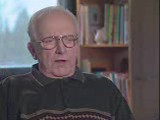
-
Martin Weiss
ArticleMartin Weiss and his family were deported to Auschwitz in 1944. Explore Marty’s biography and his description of arrival in Auschwitz.

-
David Levine describes hiding his two-year-old nephew during a roundup of children in the Kovno ghetto
Oral HistoryDavid was born to a middle class Jewish family and attended a Jewish school. In August 1941, after the Germans occupied Kovno, he was forced into the Kovno ghetto, where he shared two rooms with his immediate and extended family. Many members of his extended family were killed during the Great Aktion in Kovno in October 1941. David worked in a forced-labor brigade in the ghetto. In March 1944, he witnessed the Kinder Aktion and was able to save his nephew. During the destruction of the Kovno ghetto, David…
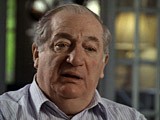
-
Mlynów: "Life under the German Occupation," According to Yehudit Rudolf
ArticleExplore firsthand testimony about the occupation of Mlynów, the establishment of the ghetto, resistance activities, and the destruction of the ghetto.
-
France
ArticleLearn about France during the Holocaust and WWII, the liberation of France, postwar trials, and the legacy of Vichy France’s collaboration with Nazi Germany.
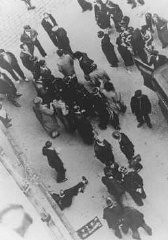
-
Gusen
ArticleIn 1940, the Nazis established Gusen concentration camp. Learn more about camp conditions, forced labor, and liberation.
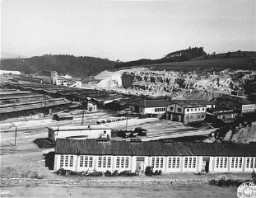
-
Moringen Youth Camp
ArticleThe Moringen camp was one of the so-called youth protection camps that the Nazi regime established for young people who were alleged to have strayed from Nazi norms and ideals.
-
The United States: Isolation-Intervention
ArticleWhen WWII began, most Americans wanted the US to stay isolated from the war. From December 1941, the majority rallied in support of intervention to defeat the Axis powers.

-
Abraham Bergman
ID CardAbraham was born to a Jewish family in Krasnik, a town in the Lublin district of Poland. The town had a large Jewish population. Abraham's father was a tailor. When Abraham was 2, his mother died and he was raised by his grandmother. At the age of 7, Abraham started public school. 1933-39: Abraham liked school but found it difficult. The Christian children often yelled at the Jews, "You killed our God." One year, on the day before Christmas break, some kids brought ropes tied to iron weights to school.…

-
Eugeniusz Rozenblum
ID CardEugeniusz's parents married in 1922 in the Soviet Union, where his father owned a textile mill. Fearing arrest by the Soviets for being "bourgeois," Eugeniusz's parents fled to Poland, where Eugeniusz was born. 1933-39: Eugeniusz was a secondary school student and was preparing to enter university, either in Poland or at the Hebrew University in Palestine. The German occupation of Lodz in September 1939 interrupted his schooling. One month after the occupation, a German soldier came to his family's door…

-
Hinda Chilewicz
ID CardHinda was the eldest of three children in a comfortable middle class Jewish family. Her father owned a textile business in Sosnowiec and her mother attended to the home. Sosnowiec in southwestern Poland had a growing Jewish community of almost 30,000 people. There was a Jewish hospital as well as religious schools. 1933–39: Hinda was just 13 years old when German troops invaded Poland on September 1, 1939. Three days later, they occupied Sosnowiec and terrorized the Jewish community, killing over a…

-
Paula Wajcman
ID CardPaula was raised in a religious Jewish family in Kielce, a city in the southeast of Poland. Her family lived in a modern two-story apartment complex. Paula's father owned the only trucking company in the district. Her older brother, Herman, attended religious school, while Paula attended public kindergarten in the morning and religious school in the afternoon. 1933-39: Paula's school uniform was a navy blazer with a white blouse and pleated skirt. At age 9, she did the "Krakowiak" dance at school. Boys…

-
Celia Petranker
ID CardCelia was the youngest of three daughters born to Jewish parents living in Stanislav [Stanislawow], Poland. Her father was an ardent Zionist, and dreamed of moving his family to Palestine to help build a Jewish homeland. Celia and her sisters attended private Hebrew primary and secondary schools to help prepare them for their eventual immigration to Palestine. 1933-39: Celia's oldest sister, Pepka, left for Palestine one week after the Germans invaded Poland on September 1, 1939. Pepka's departure was…
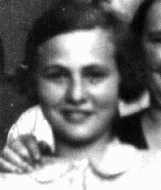
-
Julius (Julo) Levin
ID CardJulo was born to a Jewish family in the city of Stettin in northeastern Germany. From an early age Julo showed an interest in art; at 6 he had collected more than 3,000 pictures. His family hoped he would become a businessman, but his interest in painting absorbed all his energy. In 1926 he graduated from art school and by 1931 he secured his first commission in Duesseldorf. 1933-39: Until the Nazis came to power in 1933, Julo was a highly regarded artist. The Nazis' strict interpretation of art, however,…

-
Alice Lok
ID CardAlice grew up in a Jewish family in Sarvar, Hungary, near the Austrian border. She had two younger brothers and an older sister. Her father worked for the family's carpet weaving and import/export business and was often away, traveling to their Budapest office. Alice's grandfather was a community leader and president of one of Sarvar's synagogues. 1933-39: Alice had a very special relationship with her grandfather. She admired him. People knew that they could always come to him for help of any kind. He…

